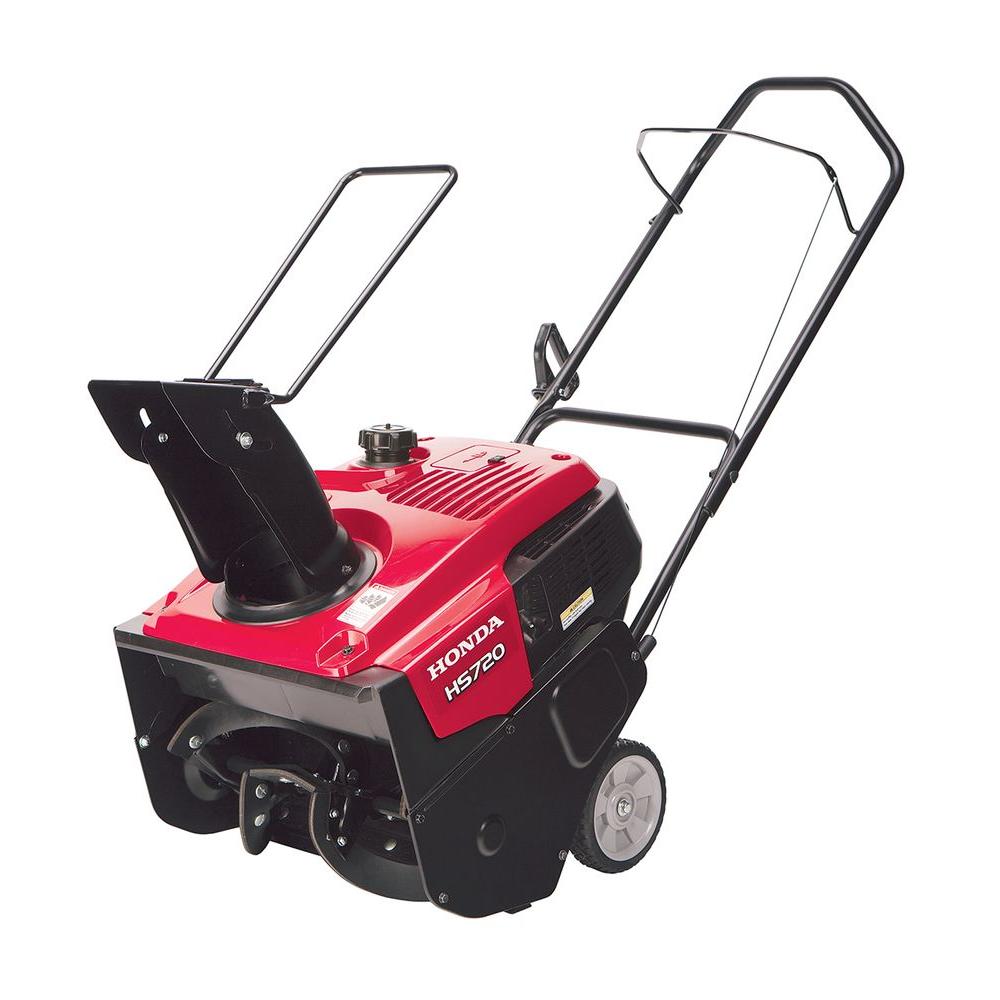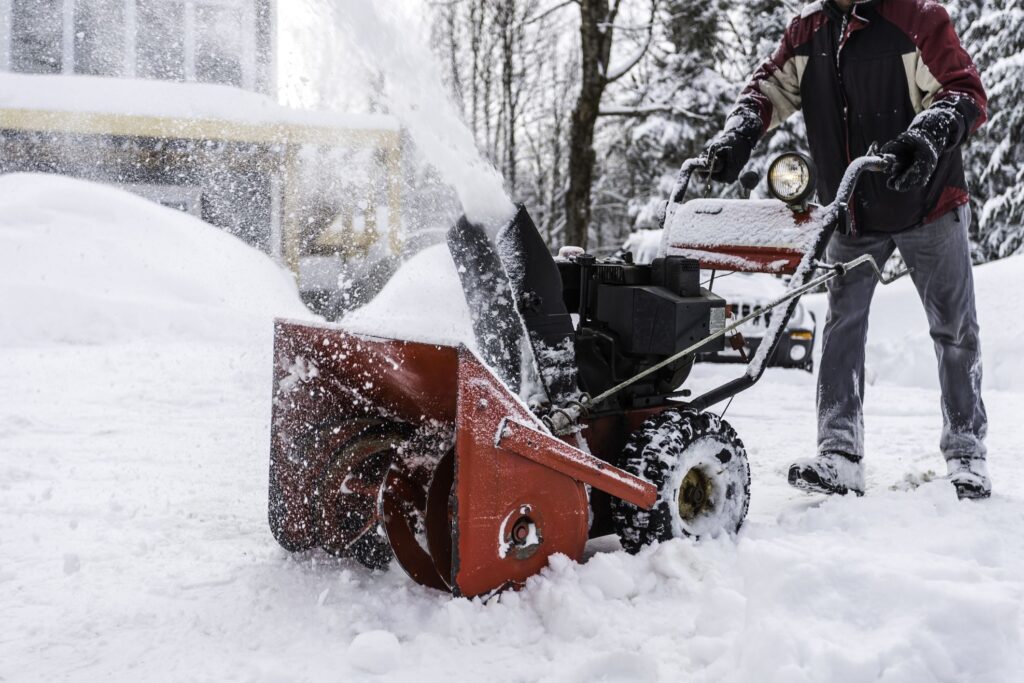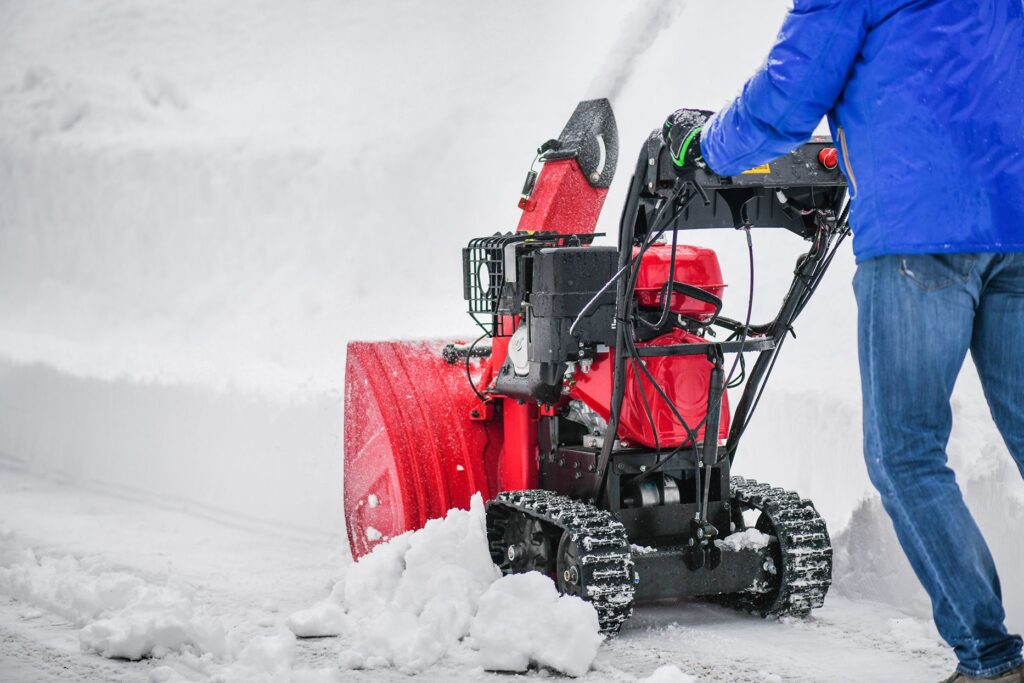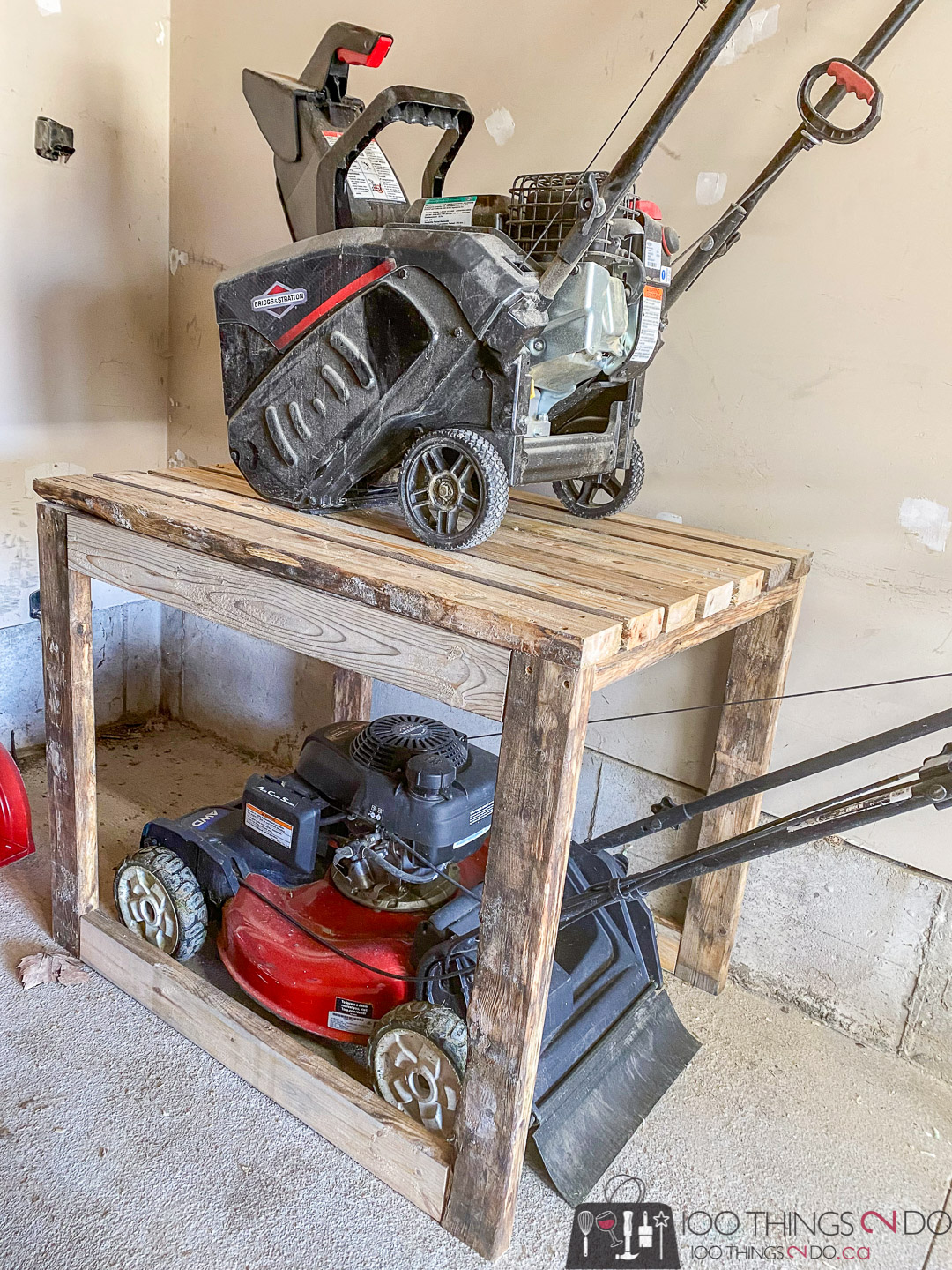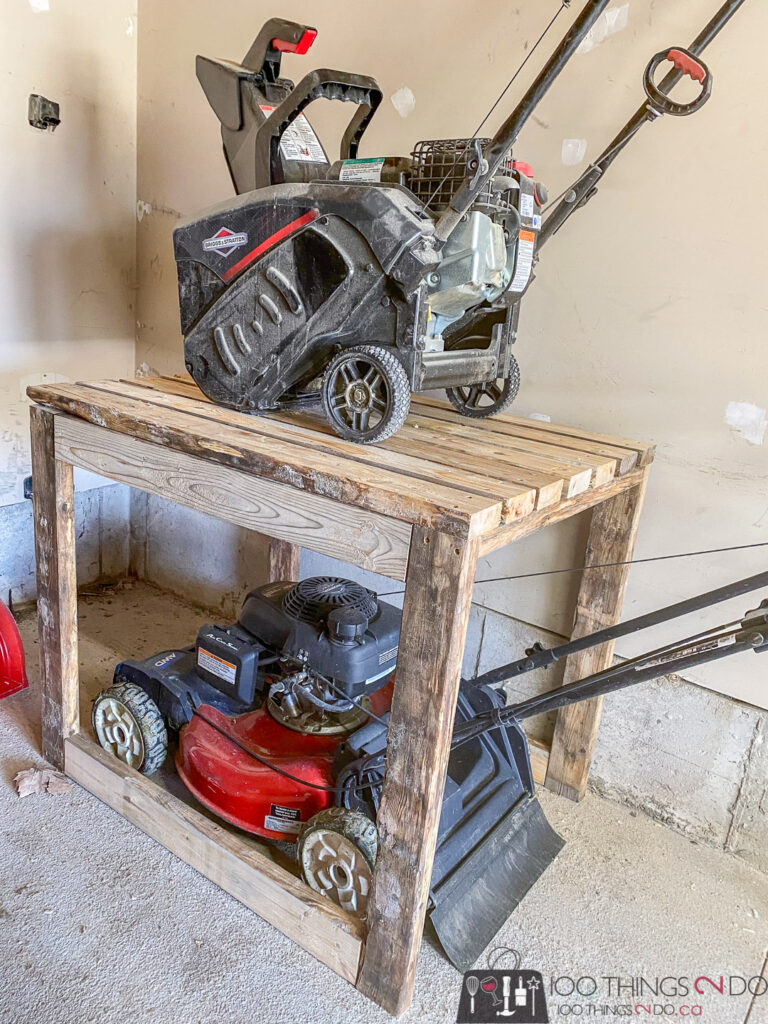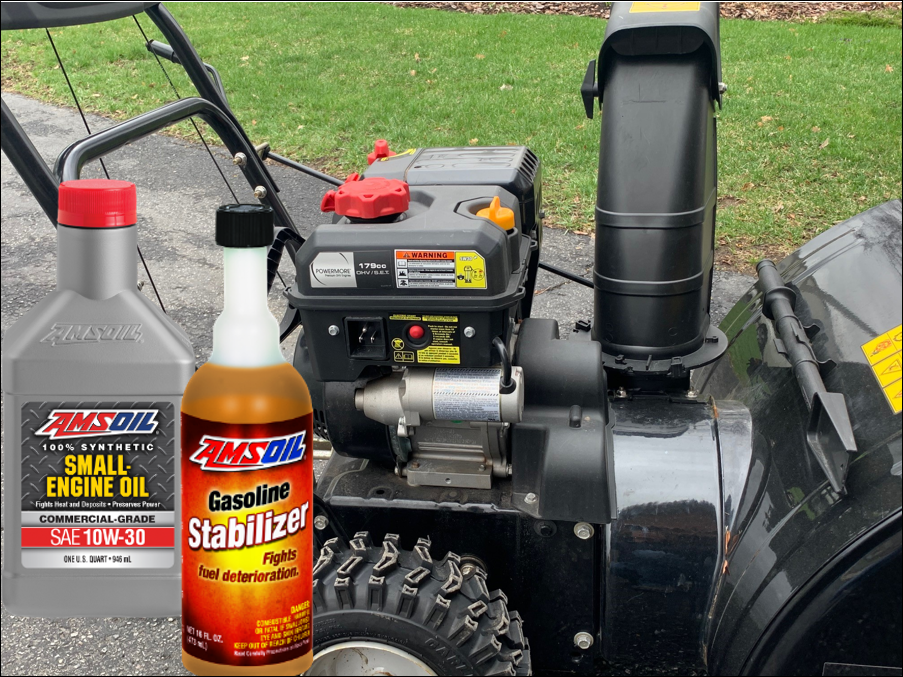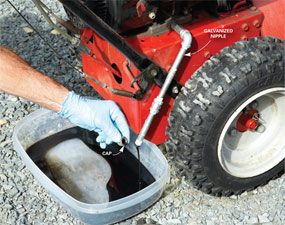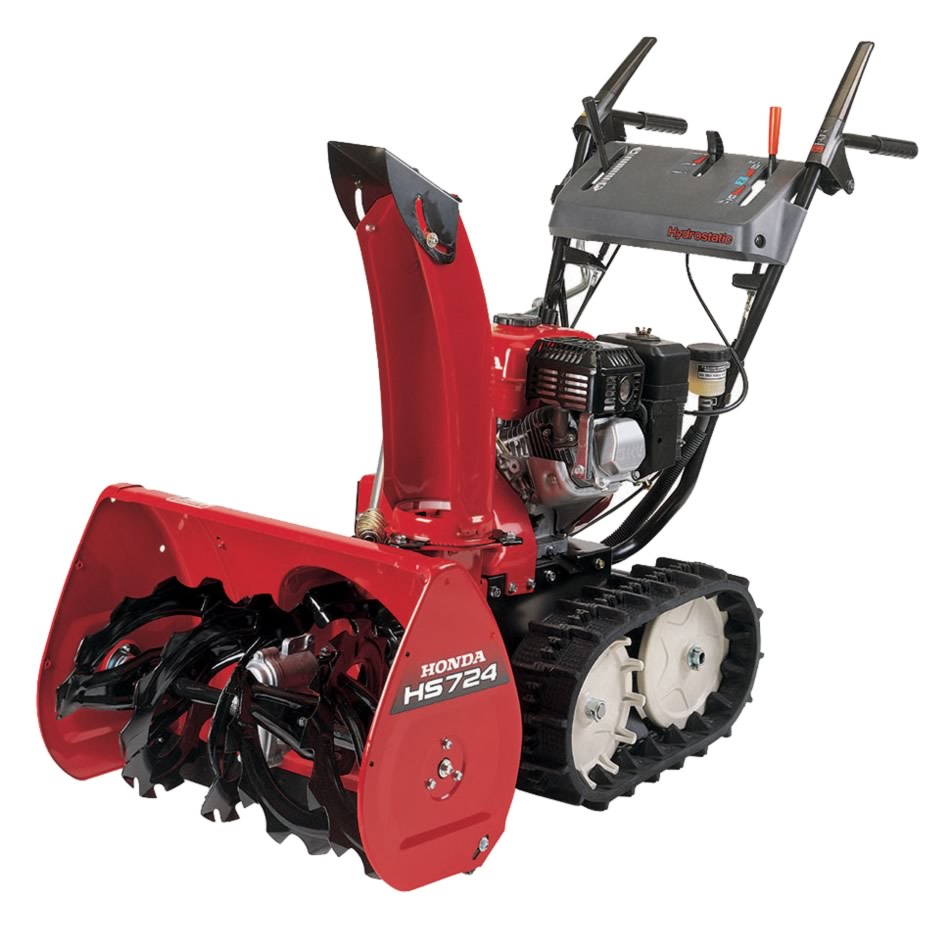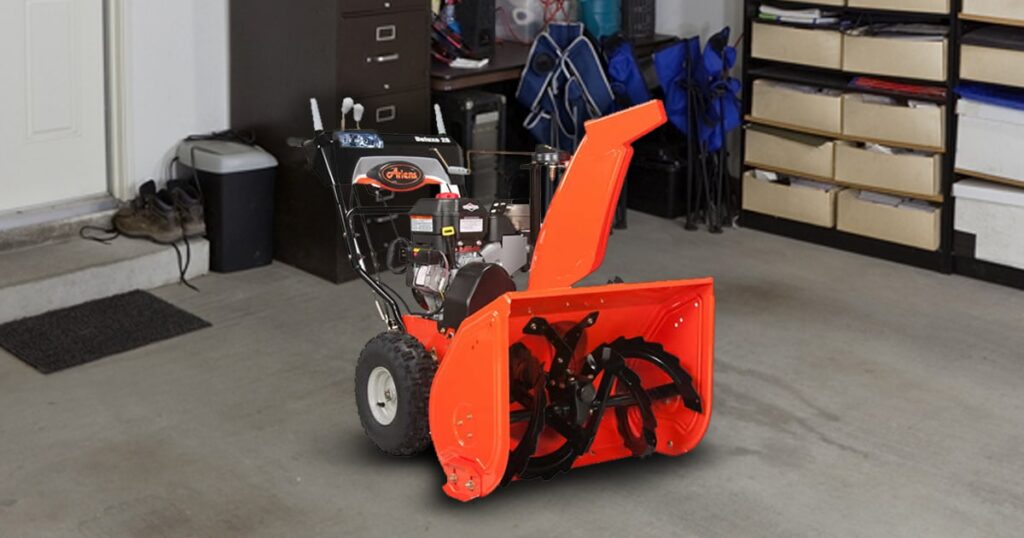If you’re a proud owner of a snowblower, you know how invaluable it is in clearing your driveway and walkways during the winter months. But as the snow melts away and spring arrives, you might find yourself wondering, “How do I store my snowblower during the off-season?” After all, proper storage is essential to ensure your snowblower remains in optimal condition and is ready to tackle the next winter season without any hiccups. In this article, we’ll provide you with some practical tips on how to store your snowblower effectively, so that it’s protected and ready to go when the snow starts falling again.
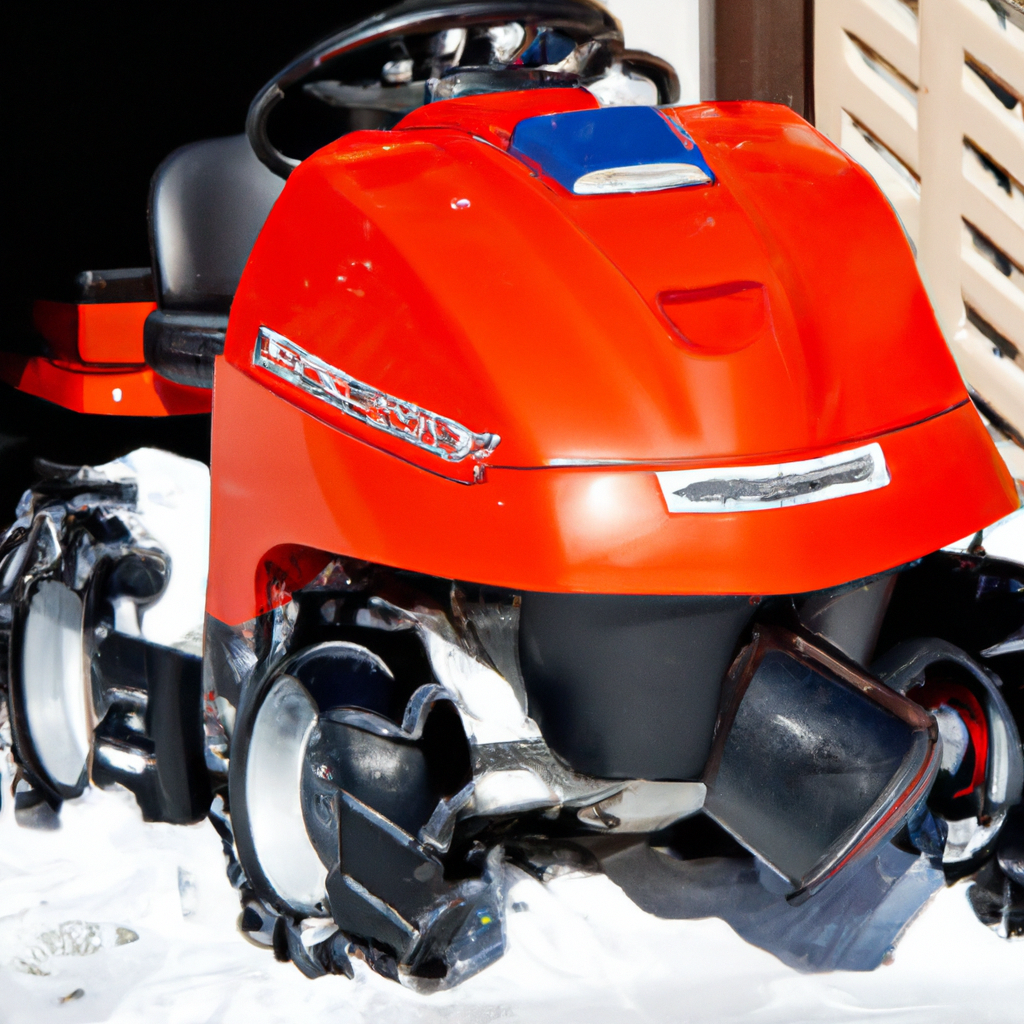
Prepare the Snowblower
Before you store your snowblower for the off-season, it’s important to properly prepare it to ensure its longevity and effectiveness when you need it again. Here are some steps you can follow to prepare your snowblower for storage:
Clean the Snowblower
Start by thoroughly cleaning your snowblower. Remove any dirt, debris, or ice that may have accumulated during the winter season. Use a brush or a scraper to clean the chute, auger, and impeller. You can also use a mild detergent and water to remove any stubborn stains or grime. Cleaning your snowblower not only helps prevent rust and corrosion but also ensures smooth operation when you use it again.
Drain the Fuel
To prevent the fuel from deteriorating and damaging your snowblower’s engine during storage, it’s important to drain the fuel tank. First, make sure the engine is cool and turn off the fuel valve. Then, start the snowblower and let it run until it runs out of fuel. This step is crucial because leftover fuel can gum up the carburetor and clog the fuel lines. Once the fuel is drained, you can safely proceed with the other preparation steps.
Inspect and Replace Parts
Before storing your snowblower, it’s essential to inspect all the parts and replace any that are worn or damaged. Check the auger blades, scraper bar, belts, and cables for any signs of wear and tear. If you notice any cracks, fraying, or significant deterioration, it’s best to replace these parts before storing the snowblower. This way, you’ll be ready to tackle the next winter season without any unexpected breakdowns or malfunctions.
Check the Belts and Cables
While inspecting the parts, pay close attention to the belts and cables of your snowblower. These components are crucial for the proper functioning of the machine. Ensure that the belts are properly tensioned and not loose or worn out. Check the cables for any signs of damage or fraying. If you notice any issues, make the necessary adjustments or replacements. This will help prevent any mechanical issues and ensure your snowblower is in optimal condition when you need to use it again.
Prepare the Engine
In addition to preparing the snowblower itself, it’s equally important to prepare the engine properly. Taking care of the engine during the off-season will help extend its lifespan and ensure reliable performance in the future. Here are some steps you can take to prepare the engine:
Run the Engine
Before storing your snowblower, it’s recommended to run the engine for a short period. This helps circulate any remaining fuel in the system and ensures that there are no clogs or blockages. It also helps keep the engine components well-lubricated during storage. Simply start the engine and let it run for a few minutes. This quick step can make a significant difference in the overall performance of your snowblower when you take it out of storage.
Change the Oil
Changing the oil in your snowblower’s engine is an important step in its maintenance routine, especially before storage. Over time, oil can become contaminated with debris and lose its effectiveness. Before storing the snowblower, check the oil level and quality. If it appears dirty or low, it’s best to change it. Follow the manufacturer’s instructions on how to change the oil properly. Fresh oil will protect the engine during storage and ensure it’s ready for use in the next winter season.
Remove the Spark Plug
Another crucial step in preparing the engine for storage is removing the spark plug. This prevents accidental starting and keeps the engine from firing up when you don’t intend to use it. Start by disconnecting the spark plug wire and removing the spark plug using a spark plug wrench. Inspect the spark plug for any signs of damage or excessive wear. Consider replacing it with a new one if needed. Once the spark plug is removed, you can safely proceed with the other steps in preparing your snowblower for storage.
Fogging the Engine
Fogging the engine is an optional but highly recommended step to protect its internal components during storage. Fogging involves treating the engine with a fogging oil or a rust preventive spray. This coating helps prevent corrosion by creating a protective barrier. Follow the manufacturer’s instructions on how to properly fog the engine. This step will give you added peace of mind and help maintain the engine’s performance and longevity.
Protect the Snowblower
Now that your snowblower and engine are ready for storage, it’s important to take precautions to protect them from potential damage. Here are some steps you can take to ensure the safety and longevity of your equipment during the off-season:
Cover the Snowblower
Investing in a high-quality cover for your snowblower is a wise decision. A cover will protect your equipment from dust, moisture, and other elements that could potentially lead to damage or rust. Look for a cover specifically designed for snowblowers, ensuring it fits snugly and provides full protection. Covering your snowblower will also help keep it clean and ready for use when winter arrives again.
Store in a Dry Location
Choosing the right storage location is crucial to ensure the longevity of your snowblower. Opt for a dry area with adequate ventilation. Moisture can lead to rust and corrosion, so avoid storing your snowblower in damp basements or sheds prone to leaks. A well-ventilated, dry area, such as a garage or a shed with proper insulation, will help keep your equipment in excellent condition during the off-season.
Elevate the Snowblower
To further protect your snowblower, consider elevating it off the ground. Placing a wooden or plastic pallet underneath the machine helps prevent moisture buildup and potential damage from contact with the ground. Elevating the snowblower also makes it easier to access and keeps it in a secure position during storage.
Use Stabilizers
Using fuel stabilizers is highly recommended to prevent fuel deterioration and engine damage during storage. Stabilizers help keep the fuel stable, preventing it from turning into varnish or gum that can clog the carburetor or fuel system. Look for a fuel stabilizer specifically designed for small engines and follow the instructions on the packaging. Adding a stabilizer to your fuel tank before storing the snowblower will ensure its smooth operation when the next winter season rolls around.
Maintain the Battery
If your snowblower is equipped with a battery, proper maintenance during the off-season is essential to ensure its longevity and performance. Here’s how you can take care of your snowblower’s battery:
Remove the Battery
Before storing your snowblower, it’s important to remove the battery. Disconnect the battery cables, starting with the negative (-) cable, followed by the positive (+) cable. Be sure to wear gloves and eye protection when handling the battery. Removing the battery prevents it from discharging or freezing during the off-season, which can damage the battery’s cells and reduce its lifespan.
Clean the Battery
While the battery is removed, take the opportunity to clean it. Use a battery cleaning solution or a mixture of baking soda and water to clean the battery terminals and cables. This will remove any accumulated dirt or corrosion that could interfere with the battery’s performance. Gently scrub the terminals with a wire brush or a battery terminal cleaner. Rinse with clean water and let the battery air dry completely before storage.
Store in a Cool Place
Proper storage of the battery is crucial to maintain its capacity. Aim to store the battery in a cool, dry place, away from direct sunlight. Extreme temperatures can negatively affect the battery’s performance and lifespan. Find a location where the battery won’t be exposed to freezing temperatures or excessive heat, such as a basement or a utility room.
Charge the Battery
Before storing the battery, it’s essential to fully charge it. Use a battery charger or a maintainer specifically designed for small engine batteries. Follow the manufacturer’s instructions for charging, ensuring you choose the correct voltage and amperage settings. Charging the battery to its full capacity before storage will help maintain its charge and prevent it from discharging completely during the off-season.

Store the Accessories
In addition to prepping the snowblower itself, don’t forget to properly store the accessories to keep them in top condition. Here are some steps you can take to store the snowblower accessories:
Clean and Lubricate the Chute
Take some time to clean and lubricate the snow blower chute before storage. Remove any snow, ice, or debris that may have accumulated. Use a brush or compressed air to ensure it’s completely clean. Apply a light coating of lubrication spray to prevent rust and ensure smooth operation when you use it in the next winter season.
Detach and Store Snowblower Skids
Snowblower skids are critical for maintaining proper clearance and preventing damage to your snowblower. Before storing your snowblower, detach the skids and clean them thoroughly. Check for any signs of wear or damage and replace if necessary. Store the skids in a safe and dry location to prevent them from getting lost or damaged during the off-season.
Stow Auger and Drive Belts
Properly storing the auger and drive belts helps maintain their integrity and prevent deterioration during storage. Inspect these belts for any signs of wear, cracking, or fraying. If you notice any issues, it’s best to replace them before storage. Once you’ve inspected, clean the belts by removing any debris or residue. Coil them neatly and store them in a dry location, away from direct sunlight.
Secure the Stabilizer Bar
The stabilizer bar keeps the snowblower stable and aligned during operation. It’s important to store it securely to prevent any damage or misalignment. Detach the stabilizer bar, inspect it for any signs of wear or damage, and clean it thoroughly. Store the bar in a safe place, away from any potential harm or misplacement. Ensuring the stabilizer bar is properly stored will maintain its effectiveness and reliability when you need it again.
Ensure Proper Ventilation
To ensure your snowblower continues to function optimally, proper ventilation is essential. Here are some steps you can take to ensure proper ventilation:
Keep the Air Filter Clean
A clean air filter is crucial for the smooth operation of your snowblower. Make it a habit to regularly inspect and clean the air filter. If the air filter appears dirty or clogged, gently remove it and clean it using compressed air or by tapping it against a surface. A clean air filter allows for proper airflow and prevents debris from entering the engine, ensuring optimal performance.
Check the Ventilation Vents
Inspect the ventilation vents of your snowblower for any obstructions or blockages. These vents are responsible for allowing air to flow through the machine, preventing overheating. Use a brush or compressed air to remove any debris or built-up dirt. Ensuring the ventilation vents are clean and clear will help maintain proper airflow and prevent any potential issues during usage.
Clean the Cooling Fins
The cooling fins on your snowblower’s engine are designed to dissipate heat and keep the engine running at an optimal temperature. Over time, these fins can become clogged with debris, affecting their efficiency. Regularly inspect the cooling fins and gently clean them using a soft brush or compressed air to remove any dirt or buildup. This will help ensure that the engine stays cool and runs smoothly during operation.
Inspect and Clear the Exhaust
A clear and unobstructed exhaust system is essential for the proper functioning of your snowblower. Check the exhaust outlet and muffler for any debris, dirt, or blockages. Use a brush or compressed air to remove any obstructions and ensure the exhaust can flow freely. A clear exhaust system prevents the accumulation of harmful gases and guarantees the efficient operation of your snowblower.
Prevent Pest and Rodent Damage
During the off-season, pests and rodents can find their way into your storage area and cause damage to your snowblower. Taking preventive measures can help protect your equipment. Here are some steps you can take:
Remove Organic Debris
Before storing your snowblower, make sure the surrounding area is free from any organic debris that could attract pests or rodents. Clear away any leaves, grass, or other organic matter that may be nearby. Removing these potential food sources will discourage pests from seeking shelter near your snowblower.
Seal Possible Entry Points
Inspect your storage area for potential entry points that pests and rodents can use to access your snowblower. Check for cracks, gaps, or holes in walls, doors, or windows. Seal any openings using caulk or weatherstripping to prevent pests from entering. This will minimize the chances of pests damaging your snowblower or building nests in or around it.
Use Pest Deterrents
To further deter pests and rodents, you can use repellents or deterrents designed specifically for this purpose. There are natural and commercially available options such as peppermint oil, mothballs, or ultrasonic devices that emit high-frequency sounds. Place these deterrents strategically around the storage area to discourage pests from approaching your snowblower.
Check for Signs of Infestation
Regularly inspect your storage area for any signs of pest or rodent activity. Look for droppings, chewed items, or nests. If you notice any indications of infestation, take immediate action to remove the pests and prevent further damage. Consider seeking professional assistance if the infestation is severe or unmanageable.
Perform Periodic Maintenance
Snowblowers require periodic maintenance to ensure their longevity and reliable performance. Here are some key maintenance tasks you should perform:
Inspect for Rust and Corrosion
Regularly inspect your snowblower for any signs of rust or corrosion. Check all the surfaces, especially metal components that may be prone to rusting. If you notice any rust, use a wire brush or sandpaper to remove it. Once the rust is removed, apply a rust inhibitor or touch-up paint to protect the surface and prevent further corrosion.
Test and Replace Spark Plugs
Spark plugs play a vital role in starting and running your snowblower smoothly. Over time, spark plugs can become fouled or worn out. Regularly test your spark plugs to ensure they’re in good condition. If you notice any signs of wear, corrosion, or poor performance, it’s best to replace them. Always use the correct type and specification of spark plugs recommended by the manufacturer.
Check and Adjust Tire Pressure
Proper tire pressure is crucial for optimal performance and maneuverability of your snowblower. Regularly check the tire pressure and adjust it as needed. Underinflated tires can affect the snowblower’s handling, while overinflated tires can make the ride uncomfortable and increase the risk of damage. Refer to your snowblower’s manual for the recommended tire pressure and use a tire gauge to ensure accuracy.
Clean and Sharpen Blades
The blades of your snowblower are subjected to a lot of wear and tear during the winter season. It’s important to clean and sharpen the blades before storage. Remove any debris or residue that may have accumulated on the blades. Inspect them for any signs of damage or excessive wear. Sharpen the blades using a file or a bench grinder, following the manufacturer’s recommendations. Sharp blades ensure efficient snow clearing and prevent unnecessary strain on the snowblower’s engine.
Prepare for Storage
As the off-season approaches, it’s time to prepare your snowblower for storage. Here are some steps you should follow:
Review the Owner’s Manual
Before storing your snowblower, take the time to review the owner’s manual. The manual contains specific instructions and recommendations for storing your specific model. It provides valuable information on maintenance tasks, storage requirements, and potential issues to look out for. Familiarize yourself with the manual to ensure you’re following the manufacturer’s guidelines properly.
Empty the Fuel Tank
To prevent fuel from deteriorating and causing damage to your snowblower, it’s essential to empty the fuel tank completely before storage. Turn off the fuel valve to stop the flow of fuel and let the engine run until it runs out of fuel. This step ensures that no fuel remains in the carburetor or fuel system. It’s also important to remove any fuel from the storage container, as old fuel can degrade and cause issues when used later.
Store with Fresh Fuel
While it’s crucial to empty the fuel tank, it’s equally important to store your snowblower with fresh fuel when the next winter season approaches. Adding fuel stabilizer to a full tank of fresh fuel just before you start using the snowblower again will help prevent any fuel-related issues. Follow the recommended ratio of fuel stabilizer to fuel as specified by the manufacturer.
Properly Lubricate Moving Parts
Before storing your snowblower, properly lubricate all the moving parts to prevent rust and corrosion. Apply lubricating oil or spray to the auger, impeller, and other rotating components. Lubricating these parts ensures they remain in good condition and are ready for use when the winter season arrives.
Spring Readiness
As winter comes to an end, it’s time to prepare your snowblower for the warm months ahead. Here are some steps you can take to ensure your snowblower is ready for storage and that it will be in great shape for the next winter season:
Perform Seasonal Maintenance
Before storing your snowblower, perform any necessary seasonal maintenance tasks. This includes inspecting and replacing worn parts, checking and tightening any loose bolts or screws, and ensuring all components are in good working condition. Performing seasonal maintenance will save you time and effort when you take out your snowblower next winter.
Reattach and Adjust Worn Parts
During the winter season, certain parts of your snowblower may require readjustment or replacement due to wear and tear. Before storing your snowblower, take the time to reattach or adjust any worn parts, such as loose belts or cables, to ensure they are in optimal working condition for the next winter. This will prevent any unexpected malfunctions or breakdowns when the snow starts falling again.
Reinstall the Battery
If you removed the battery for storage, now’s the time to reinstall it. Clean the battery terminals and cables again, removing any accumulated dirt or corrosion. Attach the positive (+) cable first, followed by the negative (-) cable, ensuring they are securely connected. Securing the battery properly will help ensure it’s ready for the next winter season and will provide reliable starting power.
Check for Fuel Leaks
Before firing up your snowblower for the next winter season, do a quick check for any fuel leaks. Inspect the fuel lines, fuel tank, and connections for any signs of leakage. If you notice any leaks, address them immediately before using the snowblower. Remember to always use caution and follow proper safety procedures when dealing with fuel and potential leaks.
By following these comprehensive steps and taking the time to properly store and maintain your snowblower during the off-season, you can ensure its longevity, reliability, and optimal performance when the next winter season arrives. Taking care of your snowblower will save you time, money, and potential frustration, allowing you to clear snow effectively and efficiently to keep your property safe and accessible.








